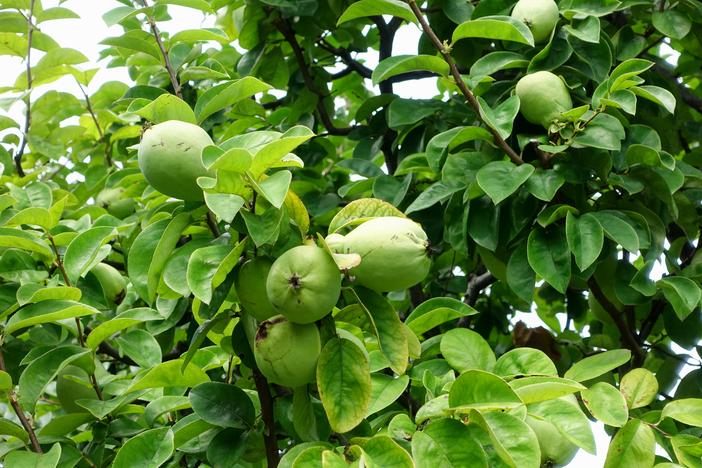Chinese Quince
(Pseudocydonia sinensis)
Chinese Quince (Pseudocydonia sinensis)
/
/

Daderot
CC0
Image By:
Daderot
Recorded By:
Copyright:
CC0
Copyright Notice:
Photo by: Daderot | License Type: CC0 | License URL: http://creativecommons.org/publicdomain/zero/1.0/deed.en | Uploader: Daderot | Publisher: Wikipedia Commons



































Estimated Native Range
Summary
Pseudocydonia sinensis, commonly known as Chinese Quince, is a deciduous shrub or small tree native to woodland margins and scrub areas in Central and Southeastern China. It can grow to a height of 10–18 meters (33–59 ft) with a dense, twiggy crown and a rounded habit. The bark is notable for its attractive peeling texture, revealing a mosaic of green, brown, and gray. The leaves are simple, oval to oblong, and finely toothed. The flowers, appearing in mid-spring, are 2.5–4 cm in diameter with five pale pink petals and are modestly showy. The large ovoid pome fruit, measuring 12–17 cm long, matures in late autumn and is renowned for its intense, sweet fragrance.
The Chinese Quince is valued for its hard, astringent fruit, which is used in traditional Chinese medicine and culinary applications, such as jams and jellies, much like the common quince. It is also appreciated for its ornamental bark and potential as a specimen or accent tree in large gardens and parks. The plant prefers full sun but can tolerate part shade, and it requires medium amounts of water and well-drained soil. While generally low-maintenance, it can be susceptible to fire blight and other diseases common to Rosaceae members.CC BY-SA 4.0
The Chinese Quince is valued for its hard, astringent fruit, which is used in traditional Chinese medicine and culinary applications, such as jams and jellies, much like the common quince. It is also appreciated for its ornamental bark and potential as a specimen or accent tree in large gardens and parks. The plant prefers full sun but can tolerate part shade, and it requires medium amounts of water and well-drained soil. While generally low-maintenance, it can be susceptible to fire blight and other diseases common to Rosaceae members.CC BY-SA 4.0
Plant Description
- Plant Type: Shrub, Tree
- Height: 10-25 feet
- Width: 10-25 feet
- Growth Rate: Slow
- Flower Color: Pink, White
- Flowering Season: Spring
- Leaf Retention: Deciduous
Growth Requirements
- Sun: Full Sun
- Water: Medium
- Drainage: Medium
Common Uses
Bird Garden, Butterfly Garden, Edible*Disclaimer: Easyscape's listed plant edibility is for informational use. Always verify the safety and proper identification of any plant before consumption., Fragrant, Hedges, Low Maintenance
Natural Habitat
Woodland margins and scrub areas in Central and Southeastern China
Other Names
Common Names: Marmeleiro-Da-China, 모과나무, Mu Gua, Mogwanamu
Scientific Names: , Chaenomeles sinensis, Pseudocydonia sinensis, Cydonia chinensis, Cydonia sinensis, Pyrus cathayensis, Chaenomeles chinensis, Malus communis var. chinensis, Malus sinensis,
GBIF Accepted Name: Pseudocydonia sinensis (Thouin) C.K.Schneid.